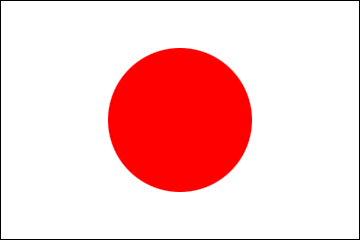From Ambassador (Where do empty PET bottles go ? )
2025/4/28
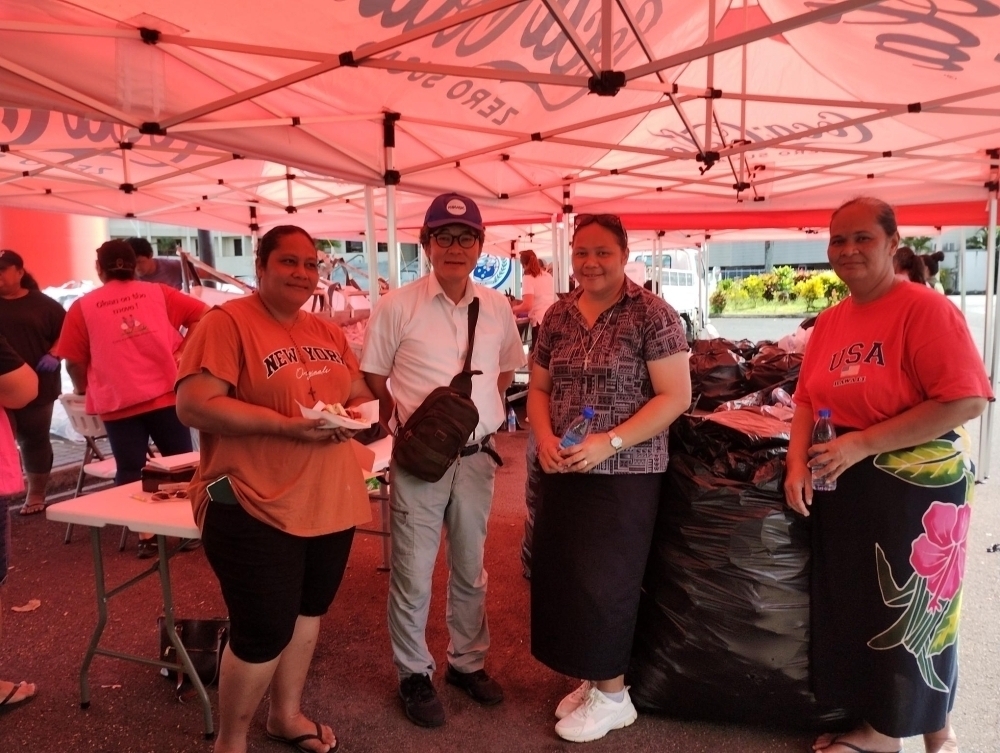
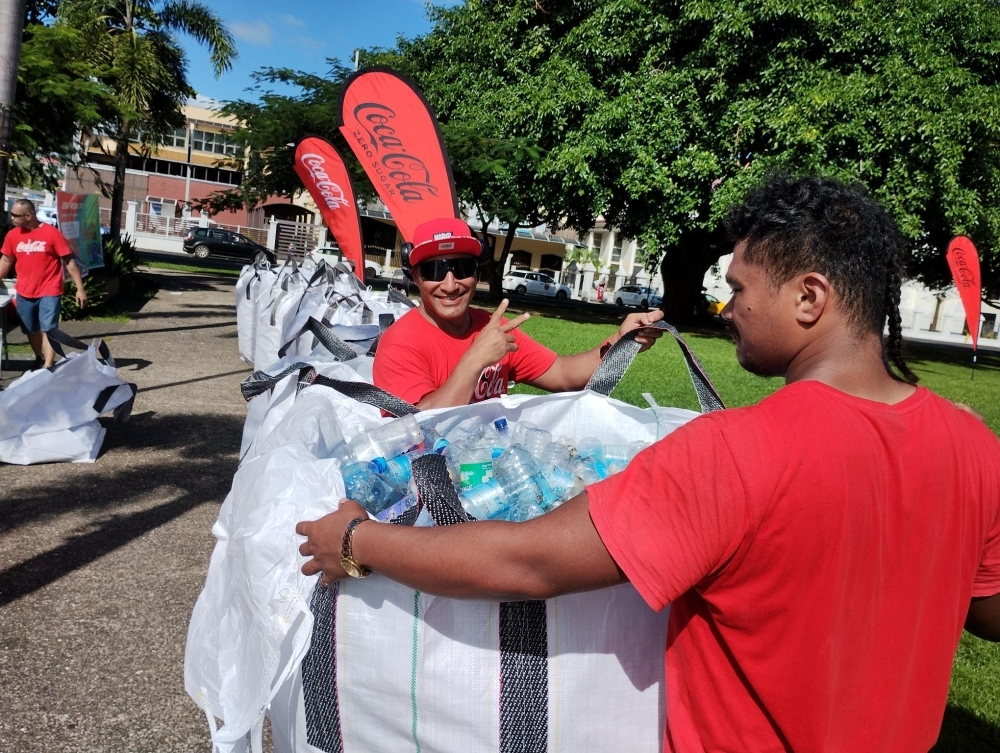
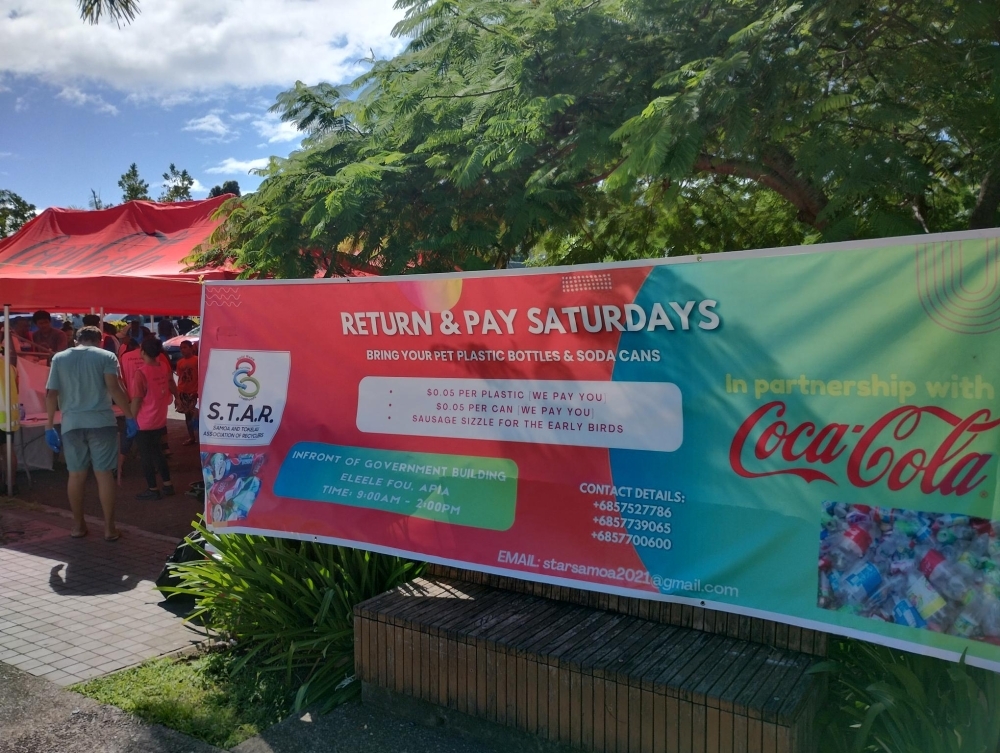
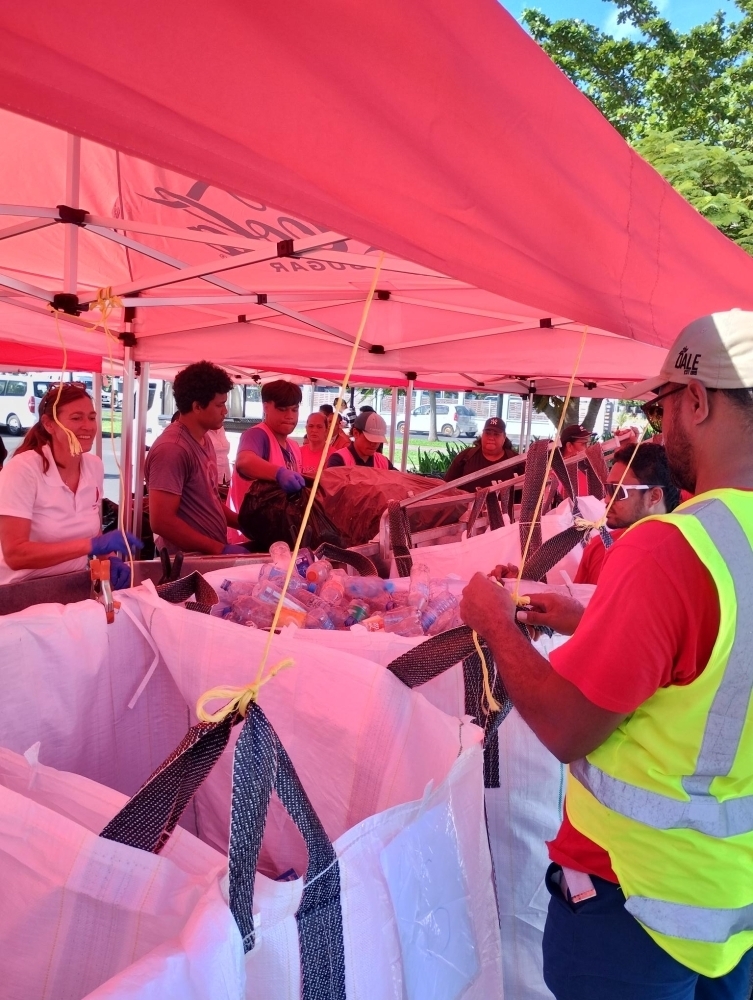
Where do empty PET bottles go ?
On April 26th, there was a big event in front of the government building. There, thousands of empty cans and plastic bottles were brought in for collection.
This event was organized as a collaboration between The Coca-Cola Company and the Samoa-Tokelau Association of Recyclers (STAR). It seems that such collection has been carried out once a month between those two parties, but this time a big tent was set up in front of the government building, and not only the STAR, but also the general public could bring cans and bottles. It is said that this is the first time that collection has been carried out in this way.
For each PET bottle collected, 0.05 tara is paid for the collector.
The used PET bottles collected in this way are shredded into small pieces by a machine introduced by the Coca-Cola Company and sent to a PET bottle recycling plant in Australia.
The Coca-Cola Company conducts this business as part of its corporate social responsibility (CSR) activities. They do not expect to make money from such activities. Generously, they collect not only Coca-Cola PET bottles, but also PET bottles from other companies, such as mineral water bottles, which are available in considerable quantities in Samoa. It was interesting for me to know that they do not remove non-PET plastics from those used bottles, i.e., remove caps, etc. Such contaminations should make recycling technically difficult, but perhaps thanks to advances in PET bottle recycling technology, it now seems possible to separate and remove foreign substances in the recycling process. Sorting and cleaning are troublesome tasks that require labor costs, so being able to eliminate them through mechanical process should lead to a reduction in processing costs.
The STAR, a local recyclers' association, has set up collection centers for empty cans and used plastic bottles at 12 schools around Apia. The part of the reasons of having those centers at schools is to get the younger generation become interested and aware of the plastic waste problems. Since some revenue can be earned from the collected recyclable waste, churches and other non-profit organizations are starting to voluntarily collecting PET bottles. Another recycling association, the Samoa Recycling and Waste Management association, which I had a chance to visit earlier, also seemed to be bringing in PET bottles collected through their channels.
Collection was done from 9 a.m. to 2 p.m. It was just before 10 o'clock when I arrived, and I saw many large bags were already filled with recovered resources.
If the domestic collection of such PET bottles goes smoothly, we can expect that there will be less plastics that will be disposed of directly at the garbage disposal site, or to be released into the environment.
On April 26th, there was a big event in front of the government building. There, thousands of empty cans and plastic bottles were brought in for collection.
This event was organized as a collaboration between The Coca-Cola Company and the Samoa-Tokelau Association of Recyclers (STAR). It seems that such collection has been carried out once a month between those two parties, but this time a big tent was set up in front of the government building, and not only the STAR, but also the general public could bring cans and bottles. It is said that this is the first time that collection has been carried out in this way.
For each PET bottle collected, 0.05 tara is paid for the collector.
The used PET bottles collected in this way are shredded into small pieces by a machine introduced by the Coca-Cola Company and sent to a PET bottle recycling plant in Australia.
The Coca-Cola Company conducts this business as part of its corporate social responsibility (CSR) activities. They do not expect to make money from such activities. Generously, they collect not only Coca-Cola PET bottles, but also PET bottles from other companies, such as mineral water bottles, which are available in considerable quantities in Samoa. It was interesting for me to know that they do not remove non-PET plastics from those used bottles, i.e., remove caps, etc. Such contaminations should make recycling technically difficult, but perhaps thanks to advances in PET bottle recycling technology, it now seems possible to separate and remove foreign substances in the recycling process. Sorting and cleaning are troublesome tasks that require labor costs, so being able to eliminate them through mechanical process should lead to a reduction in processing costs.
The STAR, a local recyclers' association, has set up collection centers for empty cans and used plastic bottles at 12 schools around Apia. The part of the reasons of having those centers at schools is to get the younger generation become interested and aware of the plastic waste problems. Since some revenue can be earned from the collected recyclable waste, churches and other non-profit organizations are starting to voluntarily collecting PET bottles. Another recycling association, the Samoa Recycling and Waste Management association, which I had a chance to visit earlier, also seemed to be bringing in PET bottles collected through their channels.
Collection was done from 9 a.m. to 2 p.m. It was just before 10 o'clock when I arrived, and I saw many large bags were already filled with recovered resources.
If the domestic collection of such PET bottles goes smoothly, we can expect that there will be less plastics that will be disposed of directly at the garbage disposal site, or to be released into the environment.
